and a deep breath. Breathe in . . .
now slowly breathe out. Do it again.
Repeat a few thousand times and we'll see you next week.
Tuesday, January 25, 2011
Friday, January 21, 2011
top ten favorite photos in east county (yours and mine)

Second place went to my alterations to a map of racial integration in Montgomery County, and the infamous "Sushi Girl" who appeared at Georgian Towers' rooftop party two years ago came in third. Surprisingly, seven of the top twenty images are either maps or plans, and nine are images I didn't make myself.
Nonetheless, the list of YOUR favorites doesn't line up with the list of MY top ten photos that I've taken in East County for JUTP. Here they are, in reverse order:
#10 Chick-Fil-A Tent City
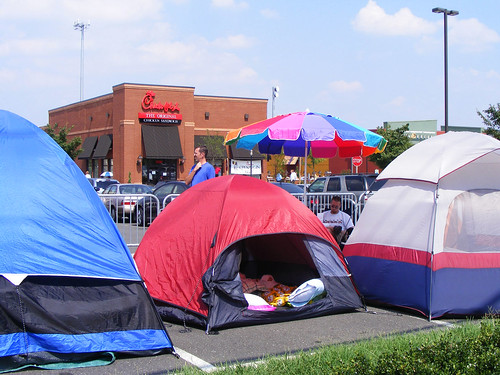
#9 Allen Theatre Burns Down
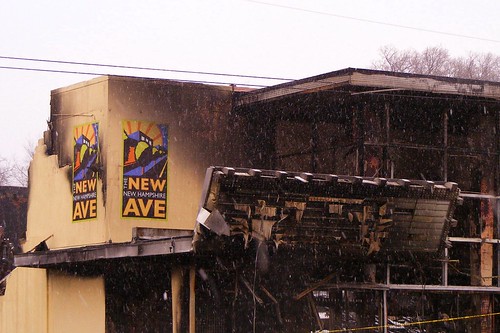
#8 K-Town
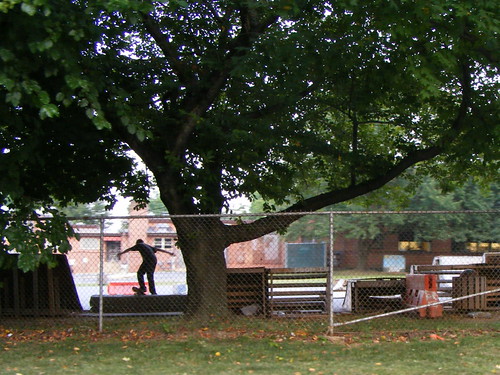
#7 The Water Tower House
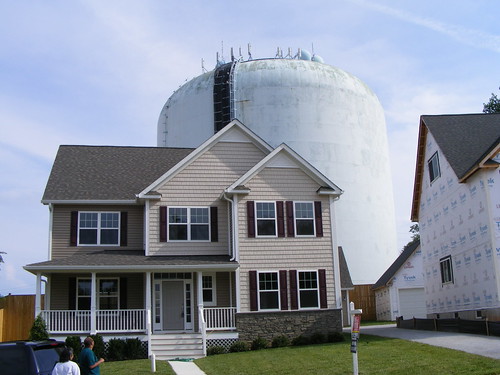
#6 Wheaton Safeway

#5 A Porch in Silver Spring
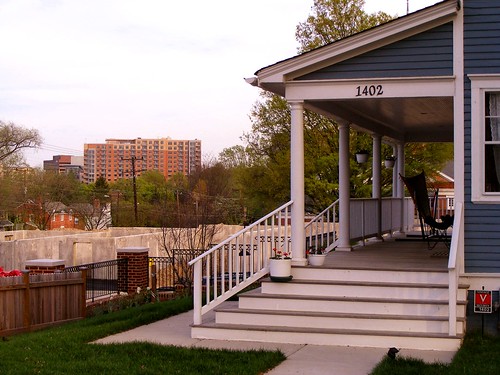
#4 Tai Lam Memorial
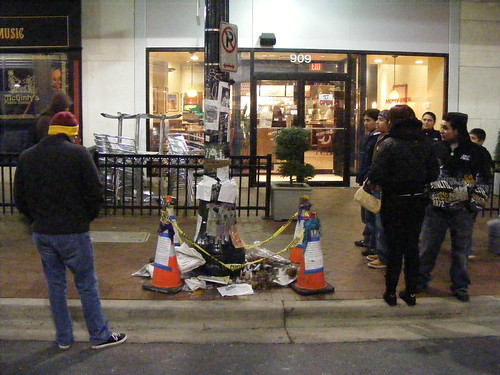
#3 Kid Falls Off Board, Everyone Laughs
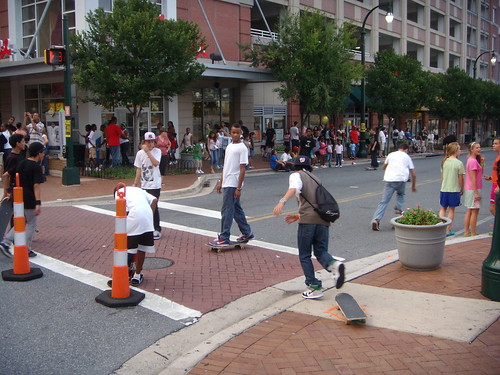
#2 World Cup Fever on Ellsworth Drive
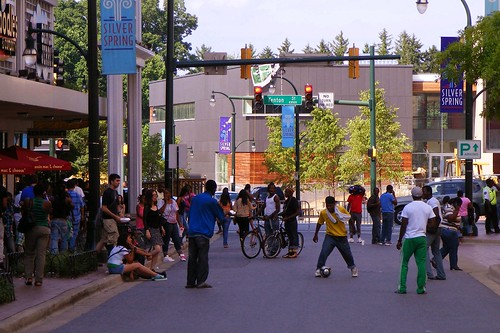
Playing soccer in downtown Silver Spring is, thankfully, still legal. I always show this picture to anyone who complains that DTSS has become "generic."
#1 (tie) "The Turf" (above) and Veterans Plaza (below)

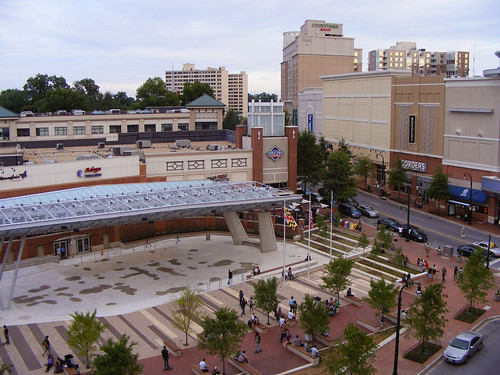
When asked in my Urban Design Case Studies class last week what a significant place in my life was, I had to say Ellsworth Drive. Even though it's still very new and by no means a masterpiece, it's probably had the most influence on me, hence why it appears so many times in the countdown. It's weird: as I look at many of these photos, I can see how my beliefs about people and places and planning came to be. That's not to say that the places I'd design would all look like Ellsworth Drive. But I'd say that I learned a lot about how cities work while people-watching outside the Majestic on a Friday night.
Thursday, January 20, 2011
my pecha kucha: where we've been, where we're going

Last fall, I participated in the Planning Department's Pecha Kucha contest, in which you have to give a quick presentation on any topic (in this case, the future of Montgomery County) in twenty slides with twenty seconds for each slide. I was first to present and a little flustered after rushing to finish my presentation that morning AND driving straight from Philadelphia to Silver Spring to give it. I was rushed and out of breath and not as well-spoken as I thought I could be, but I figured it might be worthwhile to share it with y'all, a few months after the fact.
The theme of my pecha kucha (it's Japanese and pronounced peh-CHAK-cha) was "Montgomery County: Where We've Been, Where We're Going." I used historic photos from Shorpy, mixed with new photos I've taken, to show how Montgomery County has changed over the past fifty years and how it'll change in the future. Most notable among those changes is the county's shift from being predominantly-white and rural (and later a bedroom suburb) to becoming majority-minority (the school system already is) and a mix of urban, suburban and rural place. There are many measures of diversity in Montgomery County, and I wanted to explore all of them.
To enjoy my presentation without seeing me make a fool of myself, check out this slideshow I made, complete with comments. (You'll have to click "Show Info" at the top right to see them.)
Of course, the winner of the Pecha Kucha contest was Planning Department intern and friend of JUTP Alex Hutchinson, who's guest-blogged here a couple of times now. You can see a video of his talk, and those of all of the other participants (all of whom, I later discovered, worked for the Planning Department) right here.
Tuesday, January 18, 2011
we're famous (in two ways!)

We were down at the Streetcar Showcase not only to look at an actual, non-Lego trolley, but also to do research for our entry in AARP and the American Institute of Architectural Students' yearly Livable Communities Design Competition, in which I'm proud to announce we won second place for the second year in a row. (We actually found out in October, but our friends at AIAS didn't announce it until very recently and, alas, we have all already spent our prize money on rent.)
Our proposal (PDF!) was to turn the urban renewal-era Hechinger Mall in Northeast D.C. (at right) into a mix of housing, shops and community uses, including a health center, a renovated church, and a 10-acre park. Outside the mall, they're already laying tracks for one of the city's first new streetcar lines, which will start running along H Street between Union Station and Oklahoma Avenue in just over a year. We felt this was a great place to put things we saw a strong need for in the neighborhood, from new housing to improved shopping to a big public square, something we need to see more of in the D.C. area.
You can see our entry, along with the others, at the competition website.
Monday, January 17, 2011
free screening of MLK documentary today
Friend of JUTP Jihan Asher, who volunteers at the AFI Silver Theatre, asked us to post this announcement about a screening of King: A Filmed Record . . . Montgomery to Memphis, a documentary about the life and work of Dr. Martin Luther King, Jr.:
AFI Silver Theatre and Cultural Center is continuing its annual MLK Day tradition of hosting a free community screening of King: A Filmed Record...Montgomery to Memphis.
The film features Dr. Martin Luther King, Jr., from the Montgomery bus boycott to the "I Have a Dream" speech at the Lincoln Memorial, from the dogs of Selma to the Nobel Prize and the fateful motel balcony in Memphis. With narration and commentary from Sidney Poitier, James Earl Jones, Paul Newman, Joanne Woodward, Charlton Heston, Harry Belafonte, Ruby Dee, Clarence Williams III and others.
Tickets available at the AFI Silver box office on the day of show only, limit 4 tickets per person.
10:00 a.m, 1:00 p.m
For more info, please visit AFI.com/silver
Thursday, January 13, 2011
woodside skate spot NOT closing, gets progress report in july
Rumors spread on Facebook earlier this week that the Woodside Park skate spot, which opened last August, would be closing soon. I e-mailed Ellen Masciocchi, planner for the Montgomery County Parks Department who's been working on the mini-skatepark since the beginning, to find out if it was true.
 Skating in Woodside Park last summer. Photo by Chip Py.
Skating in Woodside Park last summer. Photo by Chip Py.
"You may be hearing that we will reevaluate the skatespot in July of
this year with the community," she wrote back. "There are no plans to close it at this time."
The skate spot, which uses modular concrete pieces made by California-based skatepark builder Spohn Ranch, was always planned to be a temporary facility. Woodside Park, which is nearly forty years old, will be renovated in the near future; the Parks Department is currently working on a design that they'll present to the community this summer. They'll also collect input on the skate spot to see whether it should become a permanent part of the park. Since it opened, neighbors expressed concerns about fights that broke out there, while local skaters complained it was too small for their needs.
 Skating in Woodside Park last summer. Photo by Chip Py.
Skating in Woodside Park last summer. Photo by Chip Py."You may be hearing that we will reevaluate the skatespot in July of
this year with the community," she wrote back. "There are no plans to close it at this time."
The skate spot, which uses modular concrete pieces made by California-based skatepark builder Spohn Ranch, was always planned to be a temporary facility. Woodside Park, which is nearly forty years old, will be renovated in the near future; the Parks Department is currently working on a design that they'll present to the community this summer. They'll also collect input on the skate spot to see whether it should become a permanent part of the park. Since it opened, neighbors expressed concerns about fights that broke out there, while local skaters complained it was too small for their needs.
Wednesday, January 12, 2011
punks like to have a yard, too
It's old news that the arts - whether in the form of a dance studio, a painter's workshop or a punk house - usually move to crumbling urban neighborhoods where lots of cheap, unused space is available. But even in D.C.'s darkest days, these kinds of spaces - which usually means old warehouses - were often scarce or prohibitively expensive. As a result, the suburbs became the place where much of D.C.'s art gets made.
The Lost Tourists (from Frederick) play at Scumbag Nation in Colesville. I'm not sure who took this photo.
This is from an old-ish (December 2009) City Paper article, "The Orange Line Revolution," about punk houses in Arlington:
Anyway: I wasn't aware of the punk houses in Arlington, but there were and still are several in Silver Spring, including the Death Star at Cedar Street and Ellsworth Drive, which closed in 2006 after the property's owner wanted to converted it into offices, which never happened. Shortly after, the Corpse Fortress opened a few blocks away at Philadelphia Avenue and Fenton Street. And in Colesville, there's Scumbag Nation, located in a sprawling ranch house on a big, wooded property off of New Hampshire Avenue.
These houses are all quite old (The Death Star and Corpse Fortress probably date to the 1920s, while Scumbag Nation was probably built in the 1960s) and in somewhat marginal locations. (It wasn't that long ago that the Death Star was in a marginal area as well, but having a Whole Foods move in across the street can do that to you.) They've become obsolete as newer homes and newer neighborhoods were built farther out, and suffered from the same cycle of disinvestment that hurt inner-city areas. As a result, they became cheap and accessible to a few kids wanting to put on a show.
On the outside - and, I guess, on the inside too - a punk house can look dirty, smell awful and sound terrible. (The last one depends on your musical tastes.) But they play many important roles. They give kids something to do, and in the D.C. area where straight-edge started, it's often something without drugs or alcohol. They help form communities in places where one may not exist. (It's both an intensely local community, based around a house, a school or a neighborhood, and a regional one - bands from Frederick came to play in Silver Spring, and vice-versa.) And they're just one of the venues where a local arts scene is built.
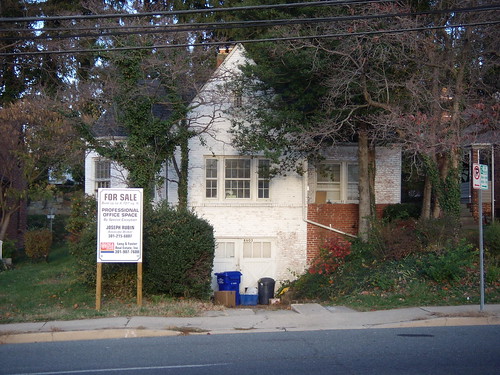
Note that some of the nation's largest suburban music scenes, in Orange County, California, Northern New Jersey, and Long Island, are outside of cities that are ridiculously expensive to live in. Similarly, we have (or had?) a substantial music scene in suburban Washington. And we'll continue to as long as D.C. remains expensive.
Last week, the Post talked about performing arts centers locating outside of the city, like Strathmore Hall in North Bethesda. To me, that's not too different from having punk houses in Arlington. People like to make art or music wherever they live, and when nine-tenths of Greater Washington's six million residents live outside of Washington, the city can't have them all.
This isn't a bad thing. While we should work to create more affordable housing in the District so that artists can continue to live there, it's good to nurture the creation of culture in the suburbs as well. In doing so, we'll create stronger communities with a greater sense of place, and better music to boot.
The Lost Tourists (from Frederick) play at Scumbag Nation in Colesville. I'm not sure who took this photo.
This is from an old-ish (December 2009) City Paper article, "The Orange Line Revolution," about punk houses in Arlington:
Every burgeoning arts scene needs a safe, cheap, and relatively carefree place in which to set up shop. Baltimore had its bottle cap factories. Brooklyn had its loft spaces. D.C. had the close-in ’burbs.(It's funny because, ten years before, the City Paper still bought into the idea of Montgomery County as "a wasteland inside a cul-de-sac of a hellhole of suburban ennui." The sooner that kind of smug ignorance dies, the better.)
The ’80s and ’90s were a golden era for the D.C. music and arts community. But many of those artists lived in places like Arlington and Silver Spring. Because they were cheaper. Because you were less likely to get your face punched in. Because you could play loud music all night.
Anyway: I wasn't aware of the punk houses in Arlington, but there were and still are several in Silver Spring, including the Death Star at Cedar Street and Ellsworth Drive, which closed in 2006 after the property's owner wanted to converted it into offices, which never happened. Shortly after, the Corpse Fortress opened a few blocks away at Philadelphia Avenue and Fenton Street. And in Colesville, there's Scumbag Nation, located in a sprawling ranch house on a big, wooded property off of New Hampshire Avenue.
These houses are all quite old (The Death Star and Corpse Fortress probably date to the 1920s, while Scumbag Nation was probably built in the 1960s) and in somewhat marginal locations. (It wasn't that long ago that the Death Star was in a marginal area as well, but having a Whole Foods move in across the street can do that to you.) They've become obsolete as newer homes and newer neighborhoods were built farther out, and suffered from the same cycle of disinvestment that hurt inner-city areas. As a result, they became cheap and accessible to a few kids wanting to put on a show.
On the outside - and, I guess, on the inside too - a punk house can look dirty, smell awful and sound terrible. (The last one depends on your musical tastes.) But they play many important roles. They give kids something to do, and in the D.C. area where straight-edge started, it's often something without drugs or alcohol. They help form communities in places where one may not exist. (It's both an intensely local community, based around a house, a school or a neighborhood, and a regional one - bands from Frederick came to play in Silver Spring, and vice-versa.) And they're just one of the venues where a local arts scene is built.

Note that some of the nation's largest suburban music scenes, in Orange County, California, Northern New Jersey, and Long Island, are outside of cities that are ridiculously expensive to live in. Similarly, we have (or had?) a substantial music scene in suburban Washington. And we'll continue to as long as D.C. remains expensive.
Last week, the Post talked about performing arts centers locating outside of the city, like Strathmore Hall in North Bethesda. To me, that's not too different from having punk houses in Arlington. People like to make art or music wherever they live, and when nine-tenths of Greater Washington's six million residents live outside of Washington, the city can't have them all.
This isn't a bad thing. While we should work to create more affordable housing in the District so that artists can continue to live there, it's good to nurture the creation of culture in the suburbs as well. In doing so, we'll create stronger communities with a greater sense of place, and better music to boot.
Tuesday, January 11, 2011
selling apartments with traffic, or the challenge of white flint
North Bethesda Market in White Flint is the newest and tallest apartment building in Montgomery County, rising nearly 300 feet over Rockville Pike. It'll eventually anchor a high-end retail complex of the same name that the developers compare to "traditional urban marketplaces", complete with "tree-canopied private streets" and a "plaza for outdoor activities." Until that happens, however, leasing agents have to rent apartments based on what White Flint is like today.
The building's website includes this time-lapse video of Rockville Pike at night, as seen from the top floor. It's mean to suggest urban vitality, but instead you just see lots and lots of headlights and taillights. Nobody should be surprised that there are lots of people driving on Rockville Pike, whose malls draw shoppers from throughout the region, most of whom arrive by car. But a video that looks like it was taken the day before Christmas sends the wrong message to potential renters who may want MoCo's answer to Dupont Circle. There's something missing.
Compare that video to this time-lapse footage of D.C. at night, featuring scenes in Georgetown and near McPherson Square. What's the difference? There are people on the street, which does much, much more to suggest the kind of lifestyle that planners and developers are striving to create in White Flint. But had the filmmaker at North Bethesda Market put their camera on the sidewalk instead of the roof, they still wouldn't have gotten images like this. At least, not until there's enough stuff and enough activity in the area to get people walking around.
With monthly rents starting at $1,500 for a studio apartment, North Bethesda Market has to draw tenants who can afford to live anywhere in Greater Washington. Selling an urban lifestyle is tough when the building's location doesn't yet compare to great urban neighborhoods in the region that are already hopping. A video of cars and traffic may have to suffice for now, but hopefully we'll see actual people on Rockville Pike soon.
The building's website includes this time-lapse video of Rockville Pike at night, as seen from the top floor. It's mean to suggest urban vitality, but instead you just see lots and lots of headlights and taillights. Nobody should be surprised that there are lots of people driving on Rockville Pike, whose malls draw shoppers from throughout the region, most of whom arrive by car. But a video that looks like it was taken the day before Christmas sends the wrong message to potential renters who may want MoCo's answer to Dupont Circle. There's something missing.
Compare that video to this time-lapse footage of D.C. at night, featuring scenes in Georgetown and near McPherson Square. What's the difference? There are people on the street, which does much, much more to suggest the kind of lifestyle that planners and developers are striving to create in White Flint. But had the filmmaker at North Bethesda Market put their camera on the sidewalk instead of the roof, they still wouldn't have gotten images like this. At least, not until there's enough stuff and enough activity in the area to get people walking around.
With monthly rents starting at $1,500 for a studio apartment, North Bethesda Market has to draw tenants who can afford to live anywhere in Greater Washington. Selling an urban lifestyle is tough when the building's location doesn't yet compare to great urban neighborhoods in the region that are already hopping. A video of cars and traffic may have to suffice for now, but hopefully we'll see actual people on Rockville Pike soon.
Monday, January 10, 2011
best use of public transit in a subway video
"Existentialism on Prom Night" by Straylight Run was my favorite song when I was 17, even before I discovered the music video, set on a subway (PATH, which runs between New York and New Jersey). The use of transit in the video is particularly interesting. A lot of videos, especially for R&B artists, play up the gritty-urban aspect of the subway, featuring skylines and graffiti. They're often underground as well.
Meanwhile, the train in "Existentialism" flies over the landscape as sunlight pours through the windows. The car is very clean and the passengers are all minding their own business, save for the little girl dancing in the aisle. That's part of the video - everyone seems disinterested at first, but they're all mouthing (or signing) the words to the song until, eventually, a sort of dance party/dream sequence breaks out and they come together.
The song is very positive and idealistic (given the title), and it lends these qualities to the train ride portrayed in the video. It certainly wasn't intended as an advertisement for public transit, but it's very effective as one.
a letter to SEPTA (on playing music without headphones on the train)
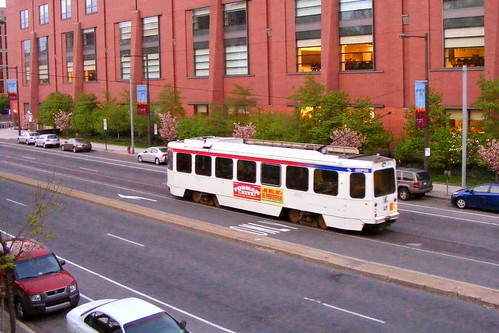
Dear SEPTA,
I moved to West Philadelphia in August for school and have become a regular user of SEPTA. I enjoy the ease and convenience of using public transit, but I've become increasingly frustrated by the number of riders I see playing music without headphones on the bus, trolley or subway. It's especially surprising to me because in suburban Maryland, where I lived before moving here, this behavior was nonexistent on our Metro. It was not only forbidden by the Washington Metropolitan Area Transportation Authority, but discouraged by other riders because it violated the norms they set among themselves for subway etiquette. This kind of behavior is not only rude but disrespectful to other passengers and to the public transit system as a whole. Yet in five months of living here and riding SEPTA I have never seen a driver or other employee do anything to stop it.
Your job is to get me around the city, not to teach manners. But I have a car and a bike, and I'm not afraid to use them. You need choice riders like me to keep SEPTA running, yet the longer I have to contend with annoyances like this, the more likely it is I'll abandon your service altogether.
I understand that SEPTA is underfunded and doesn't always have the means to deal with issues like this. That said, the existing solution to disruptive passenger behavior - posting signs in subway cars - clearly hasn't done the job. I look forward to hearing from someone in your organization about what measures you're taking to end this behavior once and for all.
Sincerely,
Daniel Reed
SEPTA Customer
Master of City Planning Candidate, University of Pennsylvania
Friday, January 7, 2011
there are great urban spaces in the D.C. area . . .
But they can be in unexpected places. At least, they are to Post architecture critic Philip Kennicott, who complains about D.C.'s great public squares:
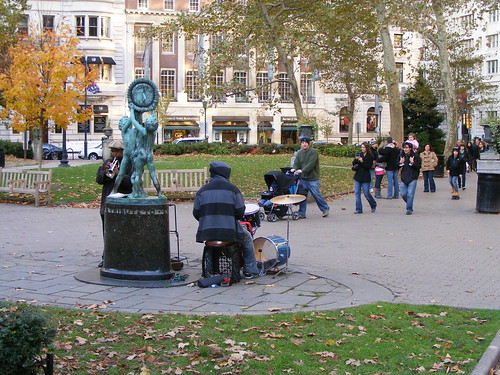
I feel like he's not getting the whole story. There are a number of public squares in D.C. that fail to live up to their potential, like Franklin Park or Farragut Square. But there are many great public spaces that do all of the things Kennicott talks about. Dupont Circle is an obvious example that he seems to brush aside. Sure, a circle doesn't make a great public square, but anyone who knows their shapes can tell you that! Isn't Dupont Circle "freewheeling?" Don't people meet there, eat there, and piss away the hours there?
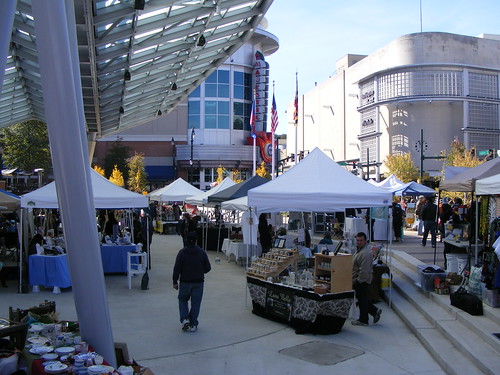
There are even more places in D.C. that sound exactly like what Kennicott wants, like 7th Street SE outside of Eastern Market or 7th Street NW in Gallery Place. Neither of them are squares, but they're still great public spaces that draw lots of people. The new plaza at 14th Street and Park Road in Columbia Heights has everything he talks about. There's a fountain in the middle for cooling off, tables and chairs for leisurely outdoor dining, and buildings on all four sides that make the space into an "outdoor room." It's a new space, but a promising one. I wouldn't be surprised if it did become one of D.C.'s great urban squares in the future.
Even more significant, meanwhile, are the public and semi-public spaces that are being created in the suburbs. If you want to see and be seen in Maryland or Virginia, you go to the Market Common in Clarendon, Reston Town Center, Rockville Town Square, Washingtonian Center in Gaithersburg, Veterans Plaza in downtown Silver Spring, or even the fountain outside of Barnes and Noble in downtown Bethesda. These spaces are all fairly new, and most of them are part of planned developments, meaning that people sometimes call them "fake" or "sterile."
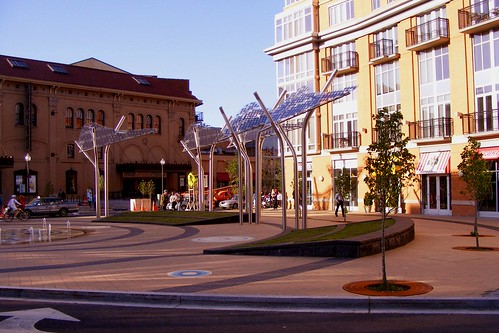 This new plaza in Columbia Heights has the potential to become one of D.C.'s great urban space.
This new plaza in Columbia Heights has the potential to become one of D.C.'s great urban space.
Yet these spaces are all well-used, the result of good urban design, a mix of uses, and enough density to fill them with people. They lend the communities they're located in a "sense of place" and help build a local culture by hosting everything from concerts to protests. They may not be in D.C. proper, but they help to create the street life that Kennicott wants to see here.
Sometimes, we try to use other places as a measure for D.C.'s greatness. Certainly I do the same while living in Philadelphia, whose Rittenhouse Square is one of the great public spaces in America, if not the world. We don't have a Rittenhouse in the D.C. area, but our region's able to create some spectacular urban places of its own. You just have to know where to look for them.
We have none, of course. Washington is a city of avenues and streets, coming together in circles that do not function well as public spaces. Our grand ceremonial spaces, such as the Mall, are too large to be great public squares. Few if any of our downtown parks demonstrate any of the liveliness of a public square . . .
There is a tremendous concomitant cultural loss to the city. Life in a square is both public and bounded, freewheeling and safe. Sip an espresso in an Italian square, and you have a sense of being both indoors and outdoors at the same time, in public, but not overwhelmed by the madness of the city. There's a good reason why a glass of wine in the late afternoon at an outdoor table with a good view of the light bustle of daily life is one of the finest pleasures of city life. Given the opportunity to meet friends that way, to delay the return home and enjoy the late afternoon sunlight, people will take it. But in Washington, there is always a rush to get home.

I feel like he's not getting the whole story. There are a number of public squares in D.C. that fail to live up to their potential, like Franklin Park or Farragut Square. But there are many great public spaces that do all of the things Kennicott talks about. Dupont Circle is an obvious example that he seems to brush aside. Sure, a circle doesn't make a great public square, but anyone who knows their shapes can tell you that! Isn't Dupont Circle "freewheeling?" Don't people meet there, eat there, and piss away the hours there?

There are even more places in D.C. that sound exactly like what Kennicott wants, like 7th Street SE outside of Eastern Market or 7th Street NW in Gallery Place. Neither of them are squares, but they're still great public spaces that draw lots of people. The new plaza at 14th Street and Park Road in Columbia Heights has everything he talks about. There's a fountain in the middle for cooling off, tables and chairs for leisurely outdoor dining, and buildings on all four sides that make the space into an "outdoor room." It's a new space, but a promising one. I wouldn't be surprised if it did become one of D.C.'s great urban squares in the future.
Even more significant, meanwhile, are the public and semi-public spaces that are being created in the suburbs. If you want to see and be seen in Maryland or Virginia, you go to the Market Common in Clarendon, Reston Town Center, Rockville Town Square, Washingtonian Center in Gaithersburg, Veterans Plaza in downtown Silver Spring, or even the fountain outside of Barnes and Noble in downtown Bethesda. These spaces are all fairly new, and most of them are part of planned developments, meaning that people sometimes call them "fake" or "sterile."
 This new plaza in Columbia Heights has the potential to become one of D.C.'s great urban space.
This new plaza in Columbia Heights has the potential to become one of D.C.'s great urban space.Yet these spaces are all well-used, the result of good urban design, a mix of uses, and enough density to fill them with people. They lend the communities they're located in a "sense of place" and help build a local culture by hosting everything from concerts to protests. They may not be in D.C. proper, but they help to create the street life that Kennicott wants to see here.
Sometimes, we try to use other places as a measure for D.C.'s greatness. Certainly I do the same while living in Philadelphia, whose Rittenhouse Square is one of the great public spaces in America, if not the world. We don't have a Rittenhouse in the D.C. area, but our region's able to create some spectacular urban places of its own. You just have to know where to look for them.
Thursday, January 6, 2011
ways to make ellsworth drive a great pedestrian street

Last month, we talked about Ellsworth Drive and what makes a good pedestrian street. Canadian planner Luis Rodriguez has a really awesome write-up at Planetizen that lays out five characteristics shared by successful carfree districts:
first, they have to be readily and easily accessible from, or mixed with, high density residential areas, office buildings, and other businesses and places of work;
secondly, they have to be extremely well connected to, and served by, the public transportation system;
thirdly, they have to be strategically interconnected with the city's pedestrian system and bicycle routes;
fourthly, they have to offer convenient bicycle parking facilities at key access points along the POSS, and/or bicycle services that allow bikers to either bike back to their original point of arrival, or between the parking facilities provided, particularly when the POSS are very long;
and fifthly, they have to be planned, designed and managed on an ongoing basis for success.
How many of these things does Ellsworth Drive already have? The Metro station two blocks away and scores of bus routes mean public transit access is great, and there are ample sidewalks. The Peterson Companies, which manages the Downtown Silver Spring complex, has done a pretty good job of running the place over the past eight years with a few slip-ups.
Two things Ellsworth Drive lacks are density and bike infrastructure. While there are lots of office and residential buildings nearby, there aren't any on Ellsworth Drive itself, which reduces the number of people who could be walking around and supporting the businesses on the street. There are also very few bike lanes in the vicinity and no bike parking that I'm aware of. It's a shame because many people who drive to Ellsworth would or could bike there if the right facilities were provided. Not only does that reduce traffic, but it would enable more people to reach Ellsworth Drive if it were closed to cars.
Together, Ellsworth and neighboring Veterans Plaza form one of the great urban spaces in the Washington area. By looking at what makes other spaces so successful, it can become even better.
Wednesday, January 5, 2011
justice department supports anti-gay bullying efforts at blake high school
Yesterday, representatives from the Civil Rights Division of the U.S. Department of Justice came to Blake High School in Cloverly to premiere a video for the "It Gets Better" project, which aims to stop anti-gay bullying. Tom Perez, Assistant Attorney General for Civil Rights, was on hand to introduce the video and answer questions from students as cameras from local TV stations rolled.
In the nine-minute film, Justice Department workers, many of whom were gay or lesbian, talked about their experiences being bullied in high school. The video had two messages: that gay and straight youth alike should feel proud of who they are, and that the government is committed to protecting them from being mistreated. I was told that yesterday's premiere happened at Blake because of the school's reputation for being "gay-friendly."
Before I graduated from Blake six years ago, my friends and I lovingly called it "the liberal faggy school on a hill." But my brother, who goes to Briggs Chaney Middle School, tells me his classmates say that "any boy who goes to Blake is an F-A-G." I was shocked by this comment, because it's words like this that kept me from reaching out to people who could help me when I struggled with my sexuality in high school.
Blake has a gay-straight alliance called Allies 4 Equality. Though it existed when I went there, the first time I ever attended a meeting was last October. Deena Barlev, who advises the club when she's not teaching 9th grade English, invited me to speak at A4E. I've been best friends with her son Gili since 1998, and it's accurate to say that Deena watched me grow up and eventually come out.
In a Facebook message, Deena told me about the school's commitment to its LGBTQ students:
Even coming from a trusted teacher like Deena or an official like Tom Perez, a phrase like "It Gets Better" might be kind of irritating to a teenager who's being tormented every day without relief. At A4E, I heard about kids who got picked on in class and teachers who didn't really care. I met one boy who got kicked out of his house for being gay. The club meets Thursdays at lunch, and for forty-five minutes these kids have a safe space in which to sort themselves out. For the rest of the week, they're out in the wild.
I still wish I'd been smart enough to come to an A4E meeting back in 2005. I'd been picked on since elementary school, and as the taunts grew from "wuss" in fourth grade to "queer" in ninth grade, I didn't want to invite any more attention to myself. I was already a brainy, mixed-race kid who preferred theatre and chorus to gym. So I tried very hard to fit in, wearing football jerseys and baggy pants, and each week I'd find a new girl to chase after. The taunting eventually stopped, but I'd spend high school working very hard to be someone I wasn't.
It was exhausting. By the time I finished senior year I was terribly confused and very depressed. Worse yet is that I knew why I was unhappy, but I couldn't admit it to myself.
But things got better, and fast. I went from a suburban high school of 1,900 students to a university with 35,000 students. I felt anonymous, but it gave me the opportunity to take stock of my life and my identity; not surprisingly, I came out two months into freshman year. After college, I was incredibly fortunate to spend a year working for the Montgomery County Council, which was a very tolerant place. I had several out coworkers, and I was able to see that gay people can lead happy, successful lives.
I live a happy, successful life, and I look forward to having a career and a family of my own one day. It's not always perfect. When Tastee Diner kicked out a lesbian couple two summers ago, I was reminded of the prejudice that remains even in as tolerant a place as Silver Spring. Occasionally, I'll still get called a faggot on the street. And, most painfully, I'm still not out to most of my family.
But yesterday, I returned Blake with my boyfriend and signed the "It Gets Better" pledge, which reads:
I also saw that my government is working to keep all of its people safe and free to be themselves. I saw that kids who are going through what I did are getting the love and support they need. And I got real, tangible proof that things are getting better indeed.
In the nine-minute film, Justice Department workers, many of whom were gay or lesbian, talked about their experiences being bullied in high school. The video had two messages: that gay and straight youth alike should feel proud of who they are, and that the government is committed to protecting them from being mistreated. I was told that yesterday's premiere happened at Blake because of the school's reputation for being "gay-friendly."
Before I graduated from Blake six years ago, my friends and I lovingly called it "the liberal faggy school on a hill." But my brother, who goes to Briggs Chaney Middle School, tells me his classmates say that "any boy who goes to Blake is an F-A-G." I was shocked by this comment, because it's words like this that kept me from reaching out to people who could help me when I struggled with my sexuality in high school.
Blake has a gay-straight alliance called Allies 4 Equality. Though it existed when I went there, the first time I ever attended a meeting was last October. Deena Barlev, who advises the club when she's not teaching 9th grade English, invited me to speak at A4E. I've been best friends with her son Gili since 1998, and it's accurate to say that Deena watched me grow up and eventually come out.
In a Facebook message, Deena told me about the school's commitment to its LGBTQ students:
Blake High School prides itself on being a place where LGBTQ students and their straight allies feel safe and respected. Virtually every instructional area of the building has a "Safe Space" sign posted, and our principal has made strong and repeated statements to faculty that our students' emotional as well as physical safety is a professional expectation."
Even coming from a trusted teacher like Deena or an official like Tom Perez, a phrase like "It Gets Better" might be kind of irritating to a teenager who's being tormented every day without relief. At A4E, I heard about kids who got picked on in class and teachers who didn't really care. I met one boy who got kicked out of his house for being gay. The club meets Thursdays at lunch, and for forty-five minutes these kids have a safe space in which to sort themselves out. For the rest of the week, they're out in the wild.
I still wish I'd been smart enough to come to an A4E meeting back in 2005. I'd been picked on since elementary school, and as the taunts grew from "wuss" in fourth grade to "queer" in ninth grade, I didn't want to invite any more attention to myself. I was already a brainy, mixed-race kid who preferred theatre and chorus to gym. So I tried very hard to fit in, wearing football jerseys and baggy pants, and each week I'd find a new girl to chase after. The taunting eventually stopped, but I'd spend high school working very hard to be someone I wasn't.
It was exhausting. By the time I finished senior year I was terribly confused and very depressed. Worse yet is that I knew why I was unhappy, but I couldn't admit it to myself.
But things got better, and fast. I went from a suburban high school of 1,900 students to a university with 35,000 students. I felt anonymous, but it gave me the opportunity to take stock of my life and my identity; not surprisingly, I came out two months into freshman year. After college, I was incredibly fortunate to spend a year working for the Montgomery County Council, which was a very tolerant place. I had several out coworkers, and I was able to see that gay people can lead happy, successful lives.
I live a happy, successful life, and I look forward to having a career and a family of my own one day. It's not always perfect. When Tastee Diner kicked out a lesbian couple two summers ago, I was reminded of the prejudice that remains even in as tolerant a place as Silver Spring. Occasionally, I'll still get called a faggot on the street. And, most painfully, I'm still not out to most of my family.
But yesterday, I returned Blake with my boyfriend and signed the "It Gets Better" pledge, which reads:
Everyone deserves to be respected for who they are. I pledge to spread this message to my friends, family and neighbors. I'll speak up against hate and intolerance whenever I see it, at school and at work. I'll provide hope for lesbian, gay, bi, trans and other bullied teens by letting them know that "It Gets Better."
I also saw that my government is working to keep all of its people safe and free to be themselves. I saw that kids who are going through what I did are getting the love and support they need. And I got real, tangible proof that things are getting better indeed.
Subscribe to:
Comments (Atom)


